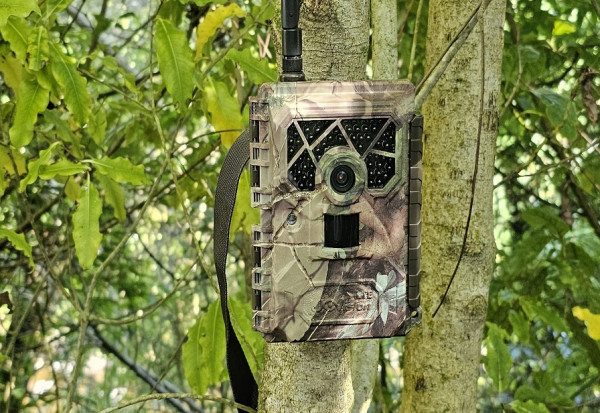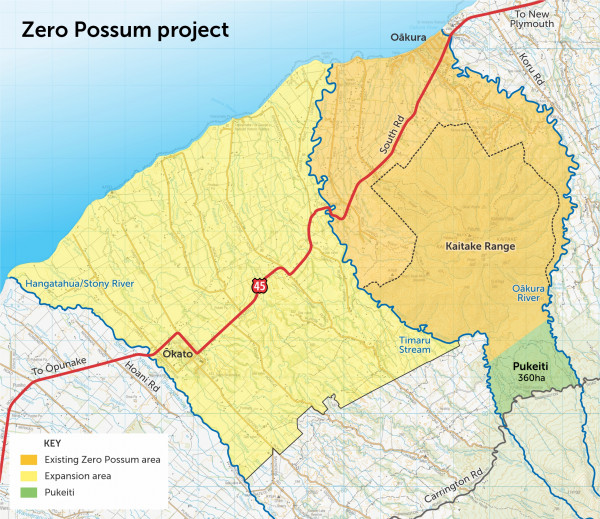It’s about to get tougher for wannabe invaders to enter the Zero Possum project zone, with the installation of 60 new self-reporting cameras.
Taranaki Regional Council launched Towards Predator-Free Taranaki in 2018, with an ambitious goal of eliminating possums between the Oakura River and Timaru Stream. The Zero Possum zone was extended to the Hangatāhua (Stony) River last year, thanks to $2.5m in Government funding, taking the total area to 9500 hectares.
Results to date are promising. About 2000ha around Oākura has been free of a resident possum population for almost three years. And in the last 14 months alone, more than 3000 possums have been removed from the extension area.
Towards Predator-Free Taranaki Programme Lead Nick Heslop says over the next few months the new cameras will be installed on properties where trapping has already taken place, to keep an eye out for re-incursion.

There will also be a network of self-reporting cameras and traps set up between the Timaru and Hangatāhua south-east of the Kaitake Range, to detect possums trying to move back in to the area. The rivers act as natural barriers on either side of the Zero Possum zone.
The camera footage can be viewed in real-time by the Towards Predator-Free Taranaki team. If a possum is detected the team will immediately head out to track and remove it.
“With the support of local landowners, our team and contractors have put in the hard mahi to remove all possums from the area . These cameras will safeguard that work and the gains we have made,” Mr Heslop says.
The vast knowledge gained since the inception of the Zero Possum project is part of a much bigger picture.
“Everything we learn here is being shared with other landscape scale predator control projects, as New Zealand works towards the Predator Free 2050 target.”
The self-reporting cameras are a valuable tool that will save time and resources and allow more efficient targeting of possums, he says.
“They will help us develop a much clearer picture of possum movement and density, enabling a more specific and effective response.
“But they are just one tool and we’ll continue to work alongside landowners and our partners to control possums and other predators in the area using a variety of methods.”
To report a possum sighting in the Zero Possum area, please go to www.trc.govt.nz/possum(external link).
